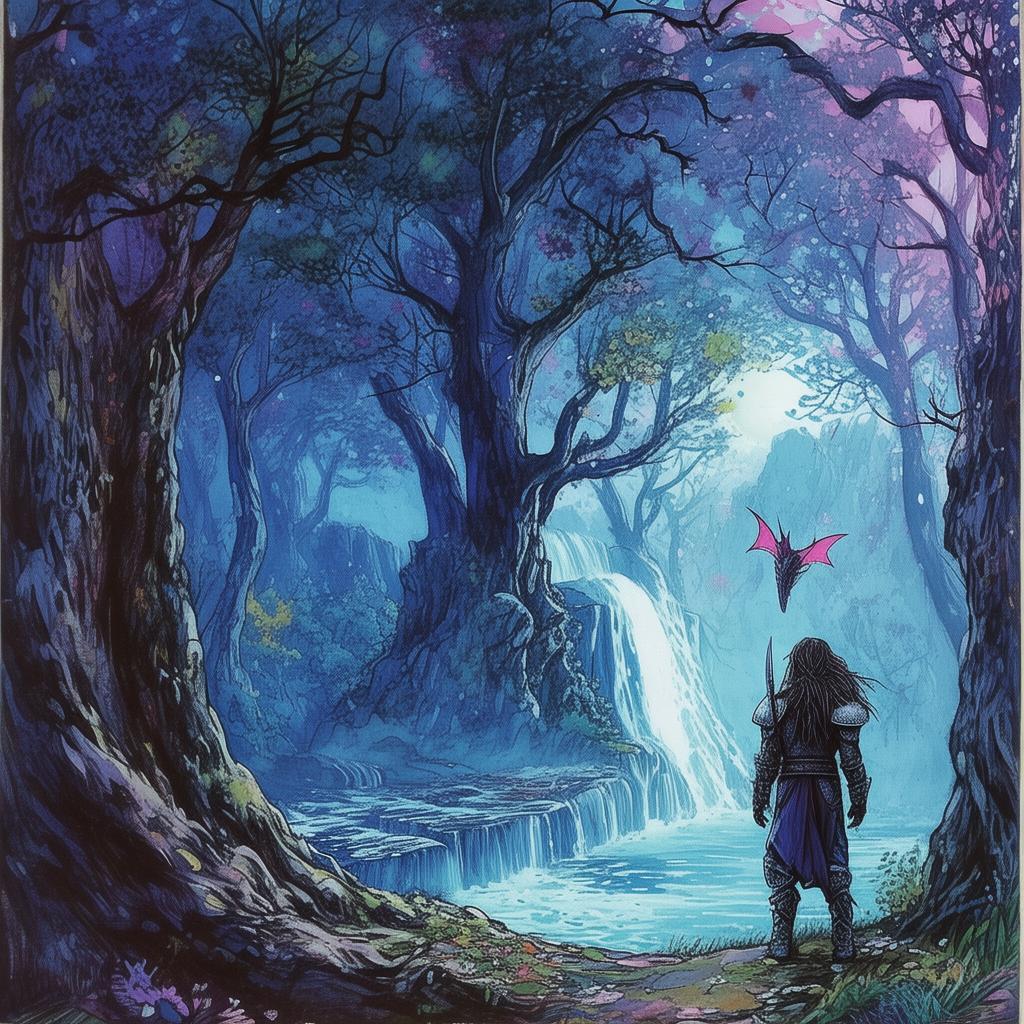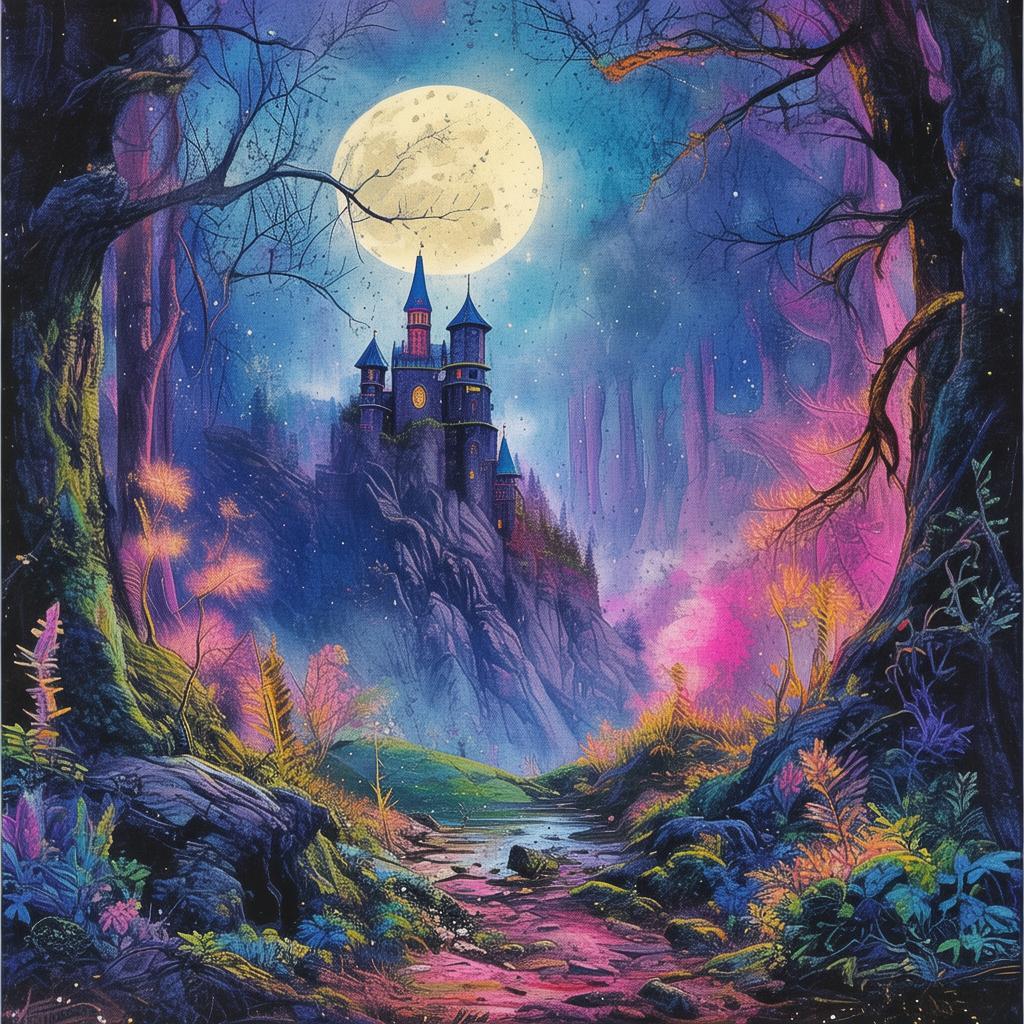The Shadow's Whisper: The Curious Case of the Vanishing Masterpiece
The night was shrouded in an eerie silence, broken only by the distant echo of the Tiber. The grand gallery of the Capitoline Museums stood as a beacon of art and history, its walls adorned with masterpieces that had withstood the test of time. Yet, one painting stood out, casting a shadow over the room—a painting by the enigmatic Baroque artist, Michelangelo Merisi da Caravaggio, known simply as Caravaggio.
The painting, "The Fortune Teller," was a marvel of chiaroscuro, the technique that defined Caravaggio's style, with its stark contrasts between light and dark. It depicted a fortune teller, her face obscured by a veil, as she gazed into the future, her eyes reflecting the enigma of the unknown. It was a captivating piece, but it was the whispers that accompanied it that gave it its sinister reputation.
The whispers began as mere murmurs among the visitors, a warning to stay away from the painting. They grew into a legend, a curse that seemed to hang over the gallery like a pall. No one could say exactly when the whispers had started, but they were as old as the painting itself. Some said it was the artist's curse, a punishment for the dark subjects he painted. Others believed it was the spirits of the subjects themselves, bound to the canvas by Caravaggio's brush.
It was in this atmosphere of dread that young art historian, Elena, found herself standing before the painting. Her curiosity had been piqued by the whispers, and she was determined to uncover the truth behind the curse. Elena was a seasoned researcher, but this was her first encounter with the supernatural, and it was unsettling.
She began her investigation with the help of her mentor, Professor Marini, a seasoned art historian who had spent his career studying Caravaggio's work. "Elena," he said, his voice tinged with a hint of fear, "this painting is more than just art. It's a window into the dark side of the artist's soul."
Elena nodded, her eyes fixed on the painting. "I know. But I believe there's a way to break the curse. I just need to find the key."
The key, she discovered, was hidden within the painting itself. Caravaggio had been a master of symbolism, and the painting was rife with it. Elena spent hours analyzing the composition, searching for any hidden message that might lead her to the truth. It was a grueling task, but she was relentless.
One evening, as the museum closed, Elena found herself alone in the gallery. She had made a breakthrough, discovering a hidden compartment within the painting. Inside, she found a small, ornate box. Her heart raced as she opened it to reveal a tiny, intricately carved key.
With the key in hand, Elena approached the painting, her fingers trembling as she inserted the key into a small lock. The lock clicked, and the painting swung open to reveal a hidden compartment. Inside was a letter, written in an old, elegant script.
The letter was addressed to Elena, and it spoke of a dark secret that Caravaggio had kept hidden from the world. It revealed that the painting was not just a depiction of a fortune teller, but a representation of Caravaggio's own fear of the unknown. The curse, Elena realized, was a manifestation of his own internal struggle.
As she read the letter, Elena felt a chill run down her spine. The curse was real, and it was rooted in the artist's own psychological turmoil. But it was also a warning, a reminder that art, like life, could be a reflection of the darkest parts of the human soul.
With the letter in hand, Elena knew she had to act. She returned to the painting, her mind racing with thoughts of how to break the curse. She needed to find a way to release Caravaggio's spirit, to allow him to rest in peace.

The next day, Elena returned to the gallery, her mind made up. She stood before the painting, her hands trembling as she reached out to touch it. She whispered a silent prayer, asking for guidance and for the strength to break the curse.
As she touched the painting, a strange sensation washed over her. The room seemed to spin, and she felt as if she were being pulled into a vortex of darkness. When the sensation passed, she found herself standing in the center of the gallery, the painting still before her.
She looked around, confused, but then she noticed something. The painting was no longer shrouded in darkness. The light that had been cast by the gallery's chandeliers now seemed to emanate from the painting itself, illuminating the room with a soft, ethereal glow.
Elena knew that the curse had been broken. The painting was no longer haunted by the spirits of Caravaggio's subjects, nor by his own fear. It was now a work of art, free to stand on its own merits.
She turned to leave the gallery, her heart filled with a sense of relief and triumph. The whispers had ceased, and the legend of the cursed painting had been laid to rest. Elena had uncovered the truth, and in doing so, she had freed the spirit of Michelangelo Merisi da Caravaggio.
As she walked out of the museum, the night air seemed to whisper her name, a silent thank you for her courage and determination. Elena smiled, knowing that she had done something truly remarkable. She had not only broken a curse but had also brought a little bit of light into the darkness of the world.
✨ Original Statement ✨
All articles published on this website (including but not limited to text, images, videos, and other content) are original or authorized for reposting and are protected by relevant laws. Without the explicit written permission of this website, no individual or organization may copy, modify, repost, or use the content for commercial purposes.
If you need to quote or cooperate, please contact this site for authorization. We reserve the right to pursue legal responsibility for any unauthorized use.
Hereby declared.









